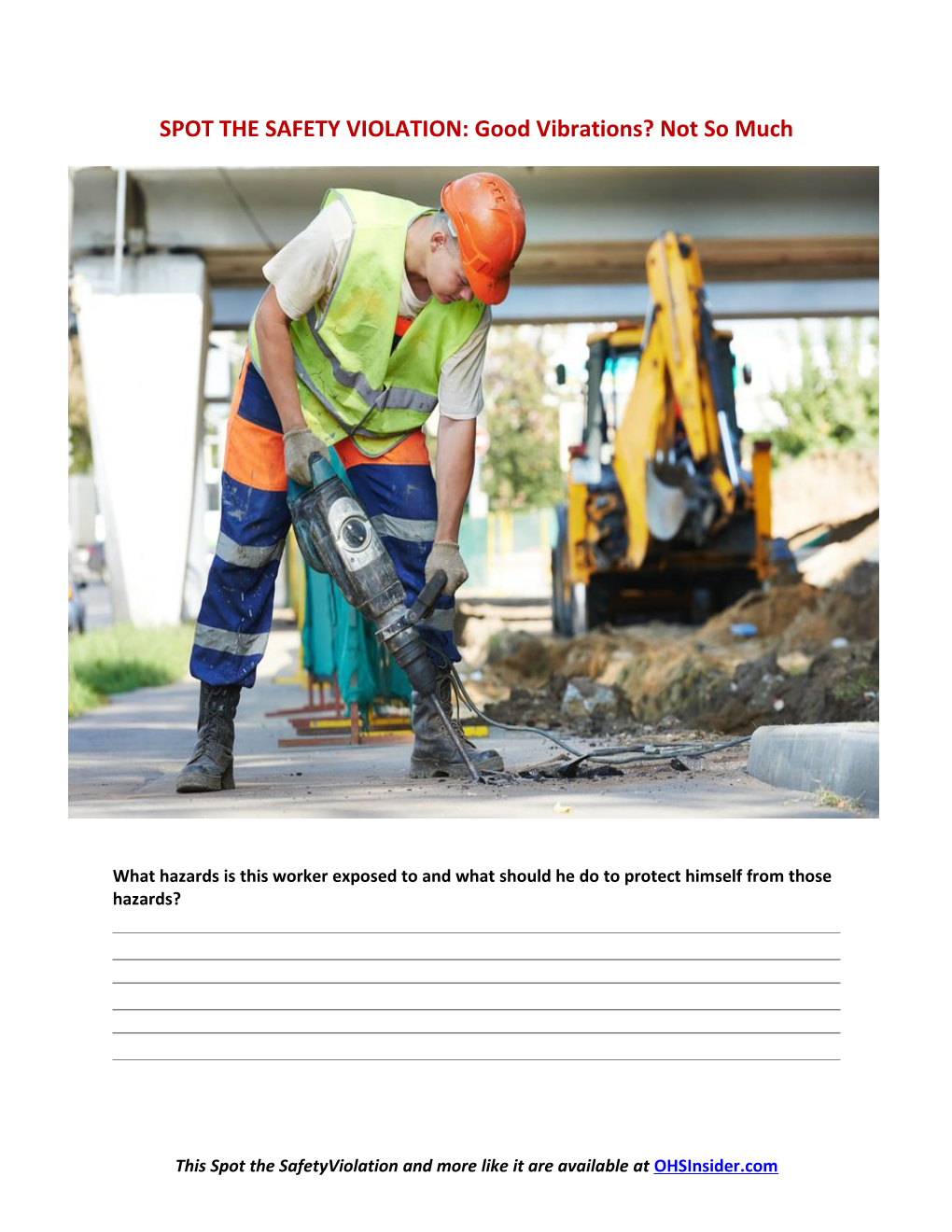SPOT THE SAFETY VIOLATION: Good Vibrations? Not So Much
What hazards is this worker exposed to and what should he do to protect himself from those hazards?
Many kinds of power tools can be found in many different workplaces. Although such tools generally help workers get their jobs done more quickly and efficiently, they also pose certain safety hazards.
For example, this picture shows a worker using a jackhammer to break up concrete. Using this tool is certainly far easier and quicker than trying to do this job by hand with a hammer and chisel.
But the jackhammer exposes the worker to hand-arm vibration, which damages blood vessels in the hands and fingers, reducing the flow of blood and harming the skin, nerves and muscles. The result can be hand-arm vibration syndrome (HAVS), also known as “vibration-induced white finger” or Raynaud’s Disease. Symptoms of HAVS include:
· Tingling fingers
· Numbness
· Loss of grip strength
· Clumsiness with the hands
· Fingertips that turn white or blue, especially when exposed to cold
· Coldness and pain in the hands.
The risk of getting HAVS from exposure to vibration from tools such as jackhammers depends on the intensity and frequency of the vibration, the duration of exposure (usually measured in years) and the part(s) of the body affected.
When determining how to address this hazard, WorkSafeBC recommends that you consider these questions:
· Can different tools be used that don’t generate as much vibration?
· Can seating be improved and/or cushions provided to reduce exposure to whole body vibration?
· Can matting be installed?
· Can a process be used that generates less vibration?
· Can limits be set for how long a worker performs the task?
· Can job rotation be used?
· Can frequent breaks be scheduled for workers?
· Do workers have vibration-dampening PPE, such as gloves and hand tool wraps?
· Is the PPE effective in reducing exposure to vibration?
The OHS Insider has information on developing a power tool program for jackhammers and other such tools and other resources, articles and model tools, such as a hand and power tool safety checklist.
In addition, note the posture of the worker in the picture. He’s bent over while operating the jackhammer. And bending at the waist for extended periods of time can cause back strain or other musculoskeletal injuries (MSIs).
To protect the worker from developing an MSI, you should have an ergonomics program (here are seven strategies to ensure that your program is successful).
Also, although the worker is wearing gloves to protect his hands and a hardhat on his head, he’s missing several key pieces of PPE.
For example, if you’ve ever been anywhere near someone using a jackhammer, you know how loud this equipment is. So where is the worker’s hearing protection?
If your workers are exposed to excessive noise for extended periods of time, you should have a noise control or hearing conservation program in place to protect their hearing. For example, if you can’t use engineering or administrative controls to reduce noise levels or limit exposure to excessive noise, give appropriate PPE, such are earmuffs or earplugs, to workers who are exposed to excessive noise, such as that caused by using a jackhammer.
In addition, the jackhammer could cause pieces of concrete to fly into the worker’s face. So he should have on eye protection to shield his eyes from any flying debris. Appropriate eye protection in this situation might be safety glasses.
This Spot the SafetyViolation and more like it are available at OHSInsider.com
